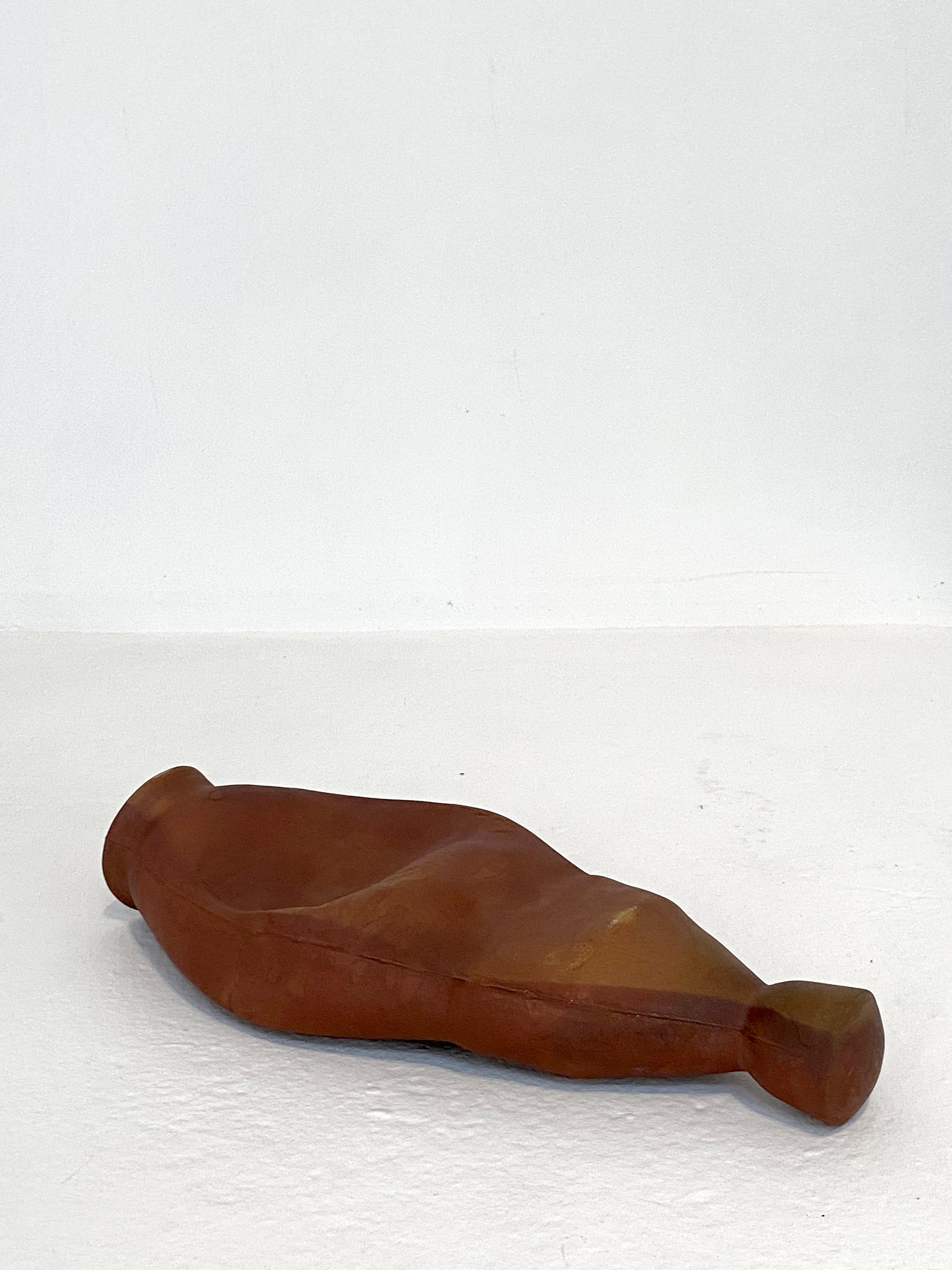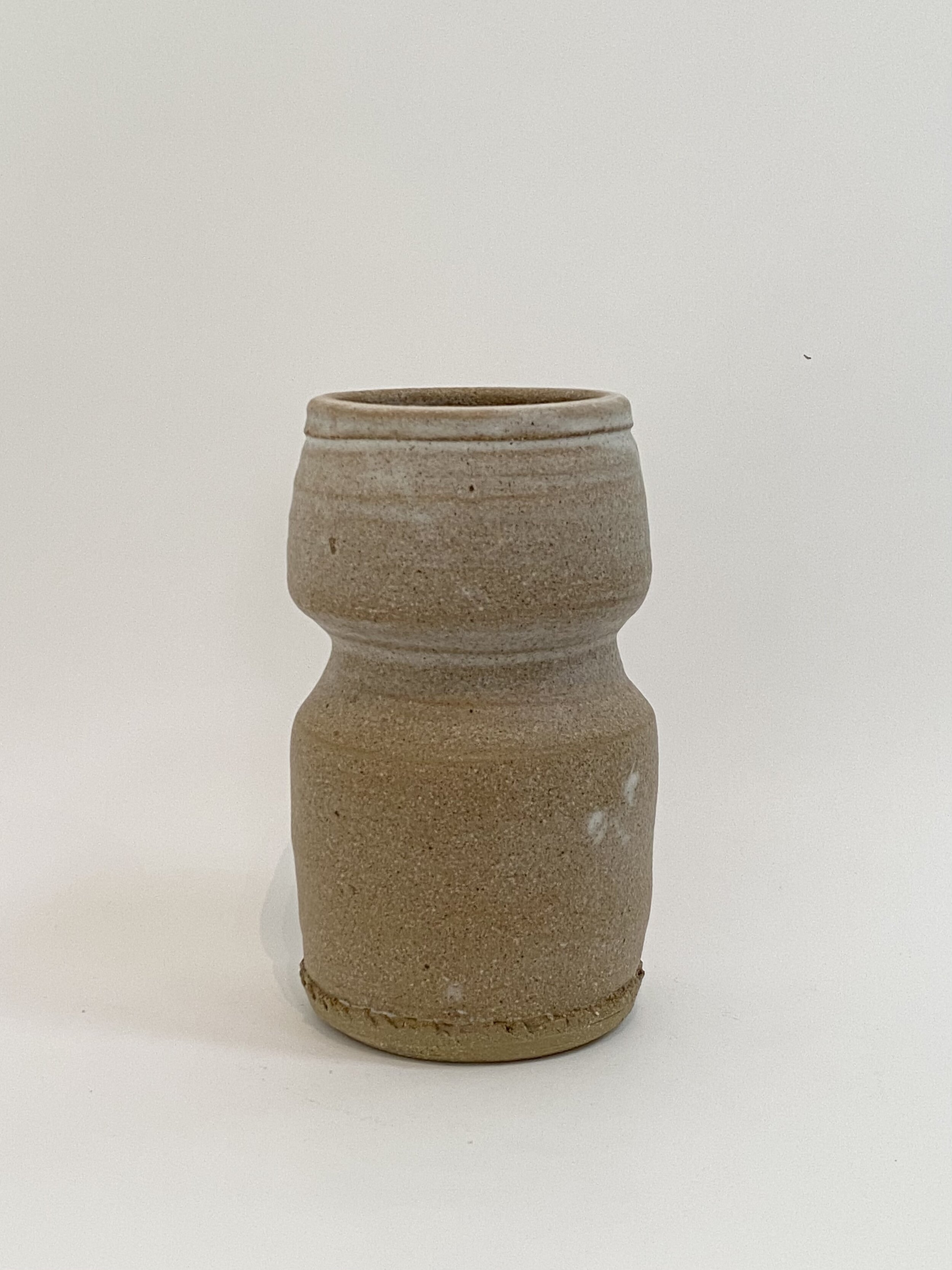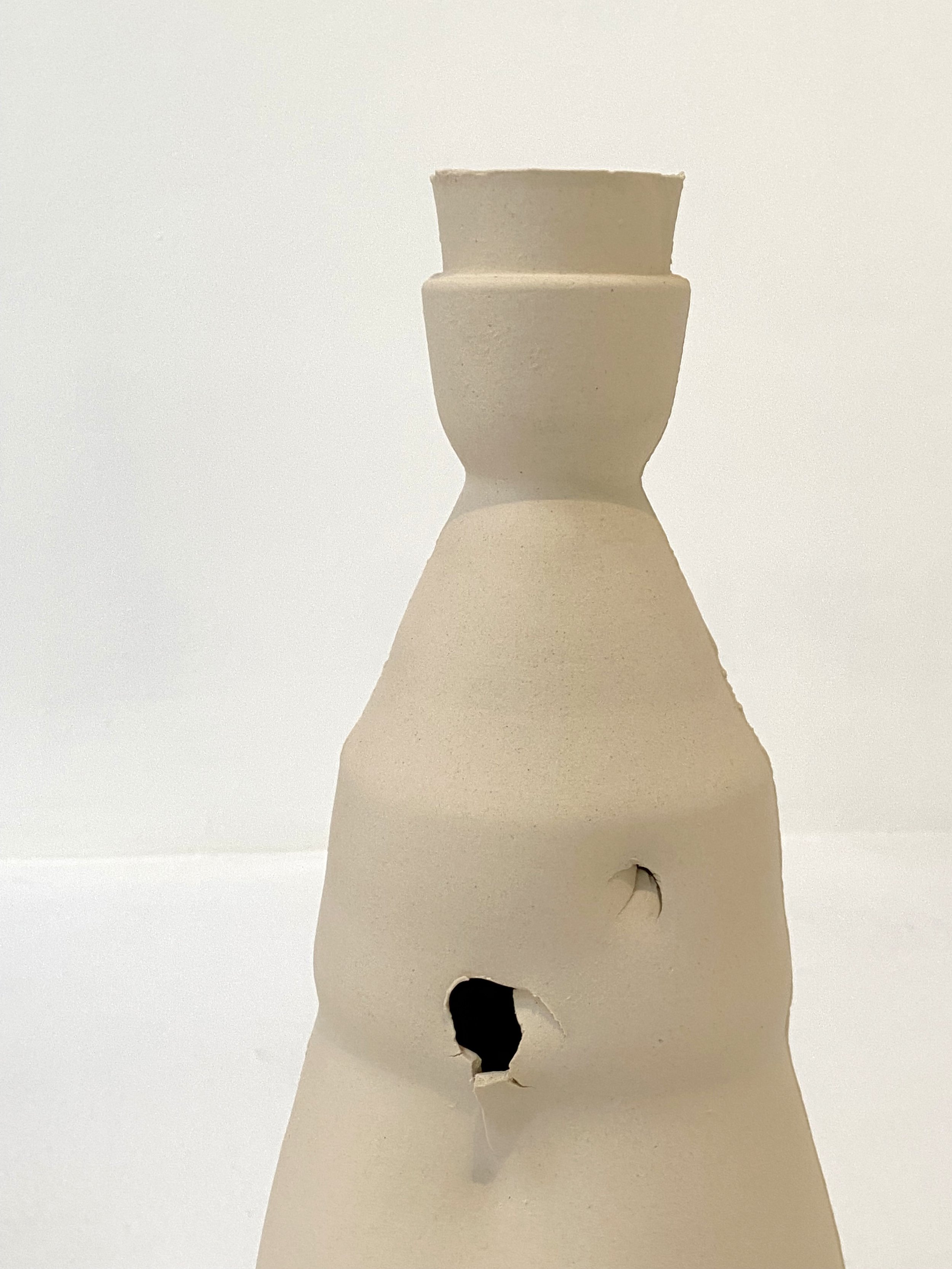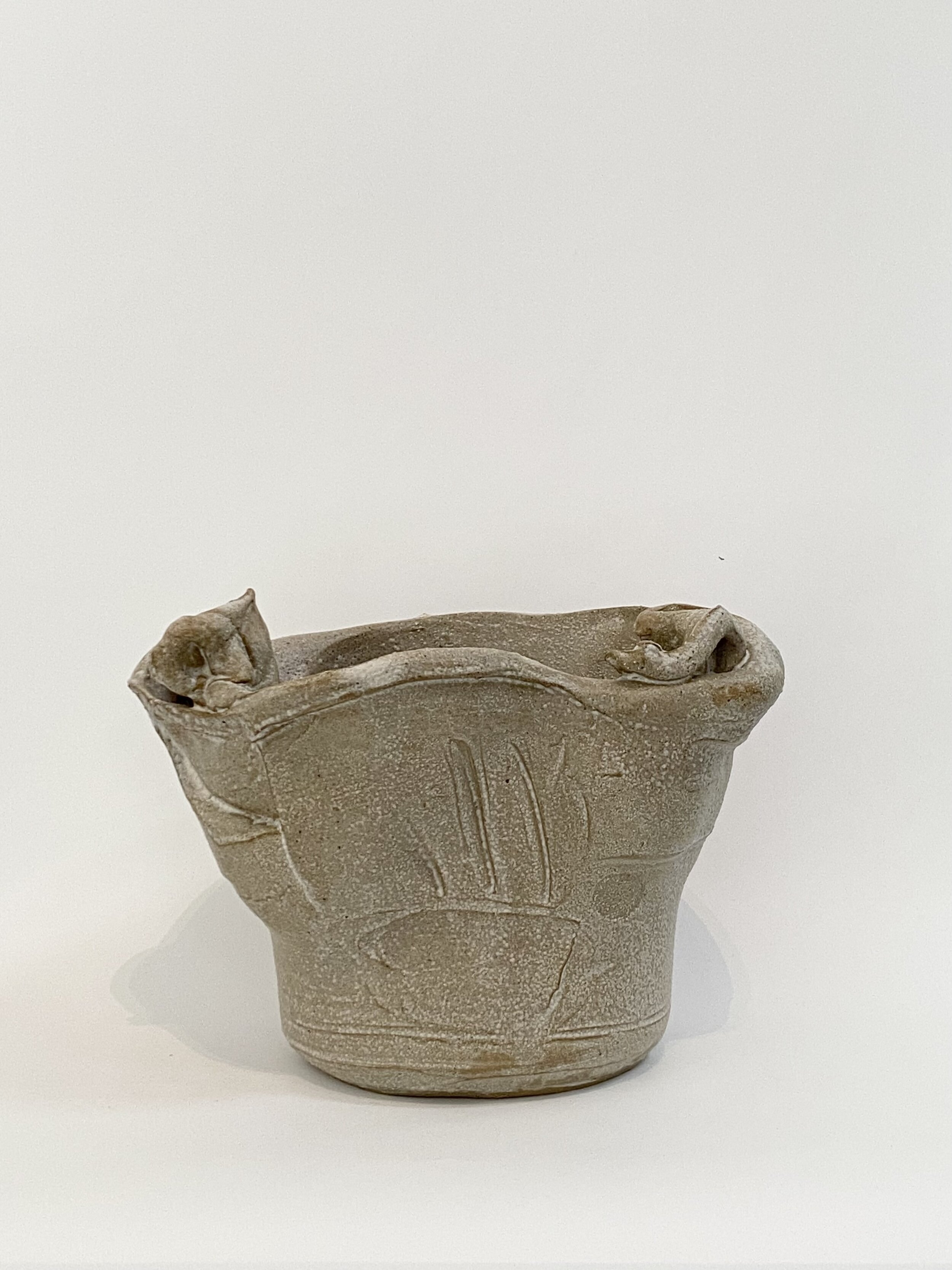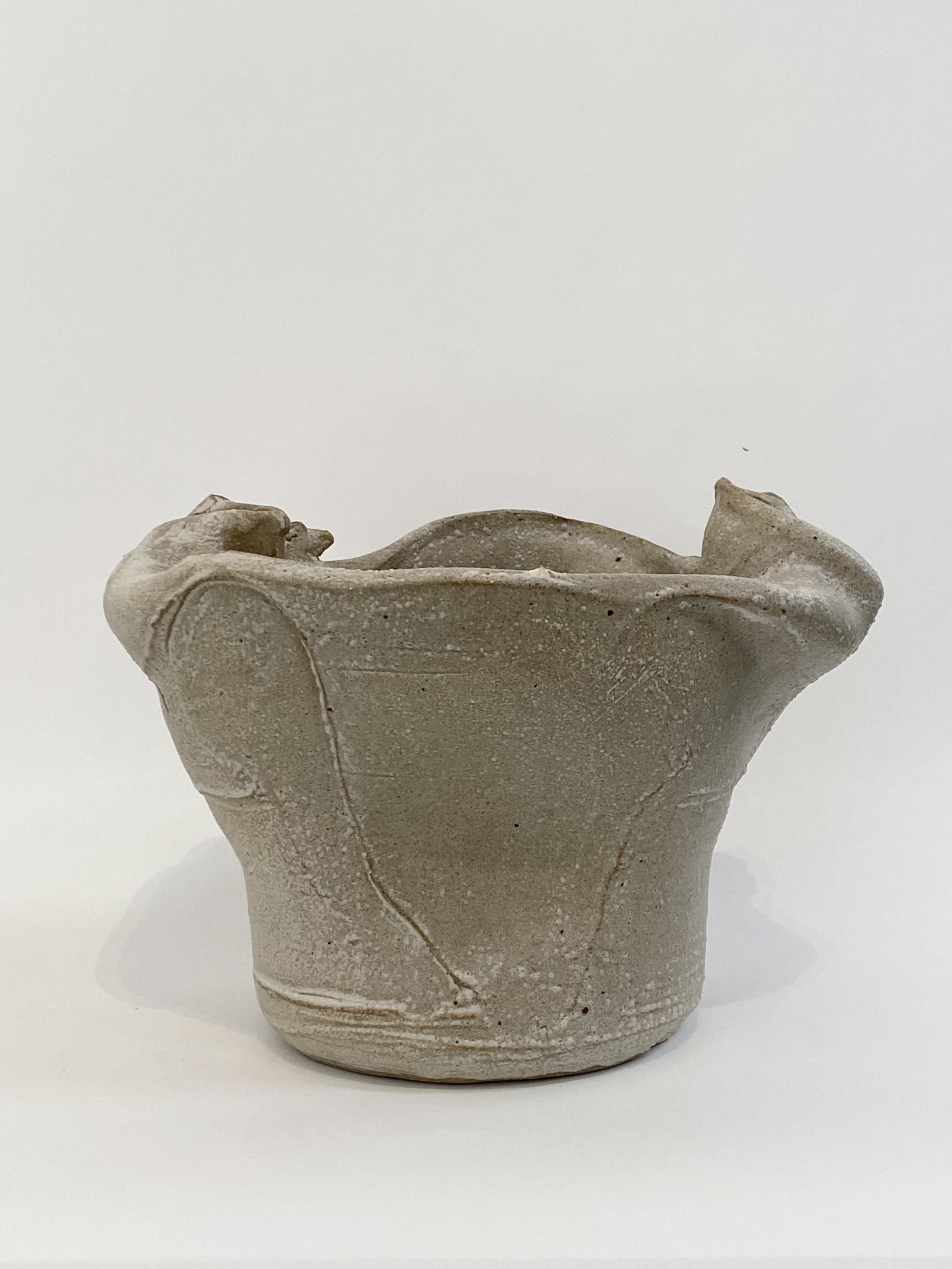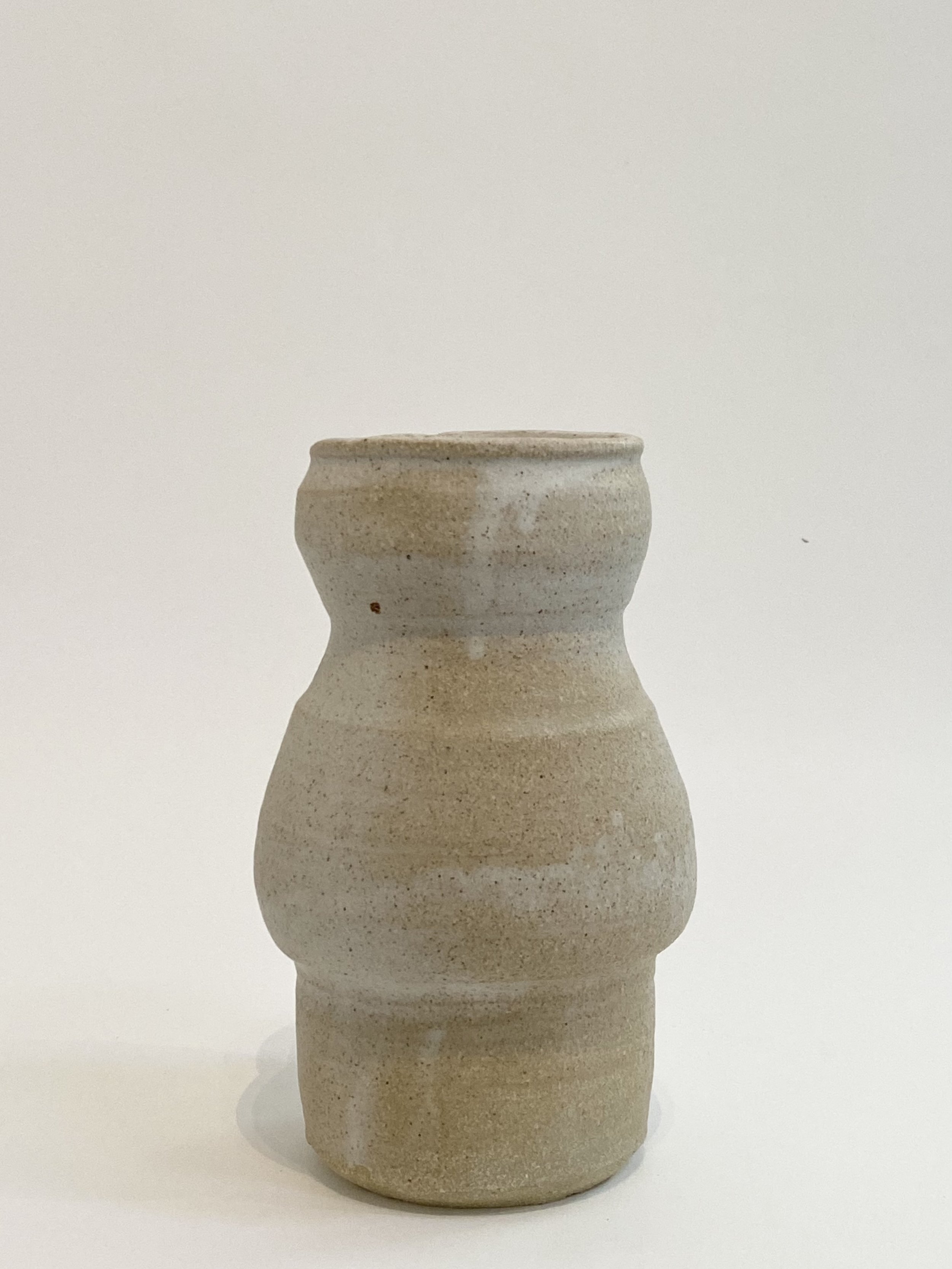
Two waists pot
DAMON MOON
Two waists pot, 2020
Bendigo clay, slip and glaze
19.5 x 11 x 10.5 cm
$ 195
collect from Stockroom in Kyneton (VIC), or we will be in touch to discuss delivery options

Additional Info
Stockroom Kyneton, ceramics gallery
30 January / 14 March 2021
DAMON MOON
Reset
Like much of what I make, these pots demonstrate a fondness for the accidental, the imperfected. There is no decoration but there are marks, the palette is subdued and the material transformation from mud-soft to stone-hard is evident. Some of the work is fired repeatedly – perhaps up to five times - the finish being built up in layers. Paradoxically, this process is often as much one of masking, and the act of erasure is as important as that of addition.
The works in this exhibition are made on the wheel, at times being assembled from multiple thrown components. Since I have never been in the habit of sketching work before it is made, the wheel is a tool I use to explore ideas, pushing things to their limits and working just this side of catastrophic failure.
If the clay is deliberately too soft, the walls too thin or the object is lifted off the wheel too soon, this is intentional. This process of ‘not caring’ is based on over forty years of practice, of knowing just how far you can go before it all falls apart and yet being open to unintended consequences.
Various traditions or movements in ceramics have celebrated the imperfections that come through accident or design. Perhaps that which comes most readily to mind is the Japanese aesthetic concept of wabi-sab i and shibui derived from a style of the tea ceremony, or cha-no yu, perfected in the sixteenth century by the tea master Sen No Rikyu.
But there are other, more modern examples that, whilst probably still owing something to these Japanese concepts, were also allied with work being carried out in other mediums. An example might be the Abstract Expressionist painting in America and Europe, which in turn influenced artists like Peter Voulkos to explore what was possible when clay was used as an expressive rather than functional medium.
And then there is the modernist style found in architecture and object design, where materials were celebrated rather than disguised, and fussy decoration and glossy finishes gave way to a more pared-back, earth-toned palette and where, in ceramics, the surface and colour of clay was something to be celebrated, and not hidden away.
These and other traditions have been an influence, but mostly these pots are about the body. Of all the craft-based disciplines, the forming of clay on the potter’s-wheel seems to provide the most direct connection between the substance that is being manipulated and the hand that shapes the material. Added to that is the metaphorical allusions surrounding the vessel and its relationship to the body and the nomenclature of ceramic form, with the mouth and the lip, the belly and foot.
And, as this past year has so amply demonstrated, from fires to plagues to the stresses we see played out in the body politic, we are always vulnerable and often prone to rupture.
-Damon Moon - 2021



